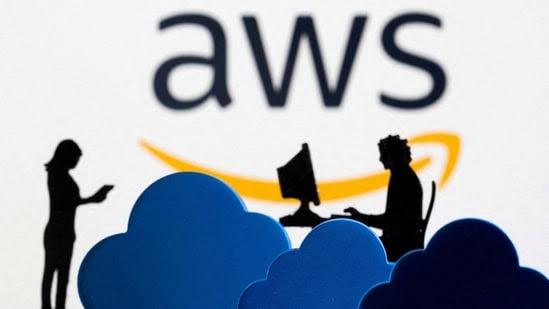The recent Amazon Web Services outage exposed a hard truth many companies ignore, which is that their entire digital existence depends on someone else’s infrastructure. When AWS stumbled for several hours on October 20, 2024, it took down Snapchat, Reddit, Ring doorbells, McDonald’s app, Roblox, Fortnite, and countless other services that millions rely on daily.
This is a wake-up call to the dangerous concentration of internet power in the hands of just three major American companies.
The Internet’s Three Kings Control Everything
Amazon Web Services doesn’t just host websites. It provides the fundamental computing tools that power roughly one-third of the internet. Microsoft Azure and Google Cloud Platform control most of the rest. Together, these three American giants have created what experts call “hyperscaler dominance“, a fancy term for “everyone depends on us.”
AWS alone generated $107.6 billion in revenue in 2024 and commands 37% of the global cloud market. When it goes down, the ripple effects reach every corner of the digital economy.
“This outage once again highlights the dependency we have on relatively fragile infrastructures,” Jake Moore, global cybersecurity advisor, told Reuters during the chaos. What is the cause? Something embarrassingly mundane called a Domain Name System (DNS) error. Essentially, AWS lost its digital map and couldn’t direct traffic to the websites it hosts. Tech workers rolled their eyes at the familiar phrase: “It’s always DNS!”
The Myth of “Just Build Your Own”
When these outages happen, the obvious question is why companies don’t build their own internet infrastructure instead of depending on AWS, Microsoft, or Google.
The reality is that building internet infrastructure requires astronomical investments that only the biggest players can afford. Google, Meta, and Microsoft haven’t just built data centers, but they’ve invested billions in submarine cables that carry 95% of global internet traffic.
Google owns or co-owns 99,399 kilometers of undersea cables, while Facebook controls 95,876 kilometers. These fiber-optic lifelines don’t just connect data centers, but they control the physical pathways that make the internet possible.
Amazon, Google, Meta, and Microsoft now own or lease around half of all undersea bandwidth worldwide. This is infrastructure control that would be nearly impossible for smaller companies to replicate.
Who Actually Owns the Internet’s Backbone?
The internet’s physical foundation rests in the hands of Tier 1 Internet Service Providers (ISPs). These are companies that own and operate the core infrastructure. These include AT&T, Verizon, CenturyLink (formerly Level 3), NTT, Deutsche Telekom, and a handful of others.
These Tier 1 providers exchange traffic with each other on a settlement-free basis, meaning they don’t charge each other for carrying internet traffic. They form the internet’s backbone; the high-speed networks that connect continents and countries.
However, large content providers like Google, Netflix, and Meta have built their own private networks and content delivery networks (CDNs), reducing their dependence on traditional Tier 1 ISPs. This creates a new layer of internet infrastructure controlled by tech giants rather than traditional telecom companies.
Building Resilience in a Dependent World
Companies cannot realistically build their own internet backbone, but they can reduce their vulnerability through several strategies:
- Multi-cloud architecture spreads risk across multiple providers. Instead of relying solely on AWS, companies can distribute their services across Amazon, Microsoft Azure, and Google Cloud Platform. This approach costs more but prevents a total shutdown when one provider fails.
- Geographic redundancy ensures that critical systems operate from multiple regions. If AWS’s Virginia data center experiences problems, services can automatically switch to servers in other locations.
- Hybrid infrastructure combines cloud services with on-premises systems. Companies maintain critical functions on their own servers while using cloud providers for less essential services.
- Business continuity planning prepares for inevitable outages. Companies that plan for downtime recover faster and lose less money when infrastructure fails.
Netflix demonstrates an effective multi-cloud strategy by using AWS for most services while maintaining its own content delivery network for video streaming. This hybrid approach allows Netflix to benefit from cloud services while controlling the most critical part of its business.
The Uncomfortable Truth
The harsh reality is that internet infrastructure has become too complex and expensive for individual companies to build independently. The investment required to create truly independent infrastructure would bankrupt most businesses and duplicate existing resources inefficiently.
However, this doesn’t mean companies must accept complete vulnerability. Smart businesses build redundancy, plan for failures, and diversify their dependencies. They accept that some reliance on external infrastructure is inevitable, but work to ensure that reliance doesn’t become a single point of catastrophic failure.
The internet backbone will likely remain controlled by a small number of powerful companies and traditional telecom providers. The key question is how businesses can thrive within this reality while protecting themselves from its risks.
















